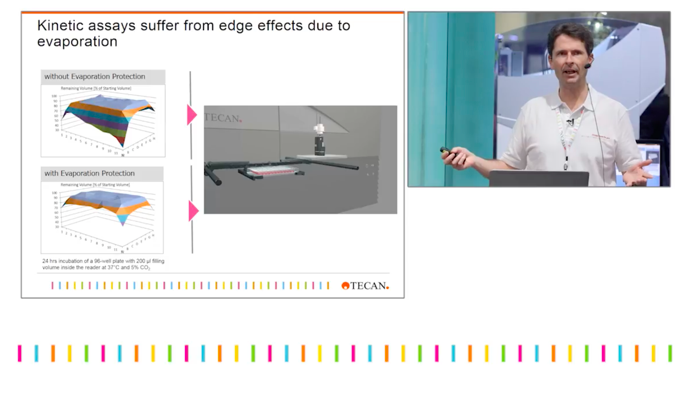SLAS2017 Presentation by Siegfried Sasshofer, Product Manager, Tecan
The ability to reduce data variability can help greatly increase your confidence in your results. Statistically significant experimental results may not actually be achieved if you review your data and find the margin of error is too high. What do scientists typically do? They repeat the experiments; check the controls; modify the assay; try a different antibody, etc. What they usually do not think of as a potential source of data variability is the microplate reader itself. However, as shown in the examples in this video, the reader can have an enormous impact on data variability.
Siegfried talks about eliminating variability in microplate-based experiments from an unexpected source: the microplate reader itself.
One key element of concern is temperature. A change of temperature within the reader of only 1 °C can dramatically affect a chemical reaction and the associated signal by greater than 10%. In a non-cooled plate reader the temperature typically rises a small amount during operation. This can lead to an increase in signal over time from the first to the last well measured. This is a repetitive effect that will occur from plate to plate.
The results of a luminescence-based biochemical assay used to screen a LOPAC library illustrate how elimination of temperature fluctuations in the plate reader can increase the z’ value and improve data quality. The screen was performed on both a non-actively cooled reader and on the Spark®* microplate reader with the Te-cool feature, which maintains the temperature at a consistent level. The average z’ for the screen performed in 16 x 384-well plates was 0.687 on the non-cooled reader compared to 0.794 on the Spark Te-cool.
In cell-based assays, Spark can reduce the data variability commonly introduced by typical readers that take only one measurement from the middle of a well. In contrast, the optimal cell read mode on the Spark scans the entire well and captures the whole signal, regardless of where the cells are growing. Spark increases experimental sensitivity and decreases data variability in cell-based assays. Another advantage of Spark® for monitoring live cell-based assays over time is the unique humidity chamber that prevents evaporation during incubation, yet allows for easy measurements as an integrated, magnetic lid lifter temporarily removes the chamber’s lid to enable plate reading.
*For research use only. Not for use in diagnostic procedures.
About the author

Siegfried Sasshofer
Siegfried Sasshofer heads the marketing team responsible for Tecan’s Detection products based out of Tecan’s development and manufacturing center for microplate readers and washers in Grödig, Austria. He has over 20 years’ experience in working in the field of bio-analytics. He studied Biotechnology, holds an MBA and joined Tecan in 1997.












